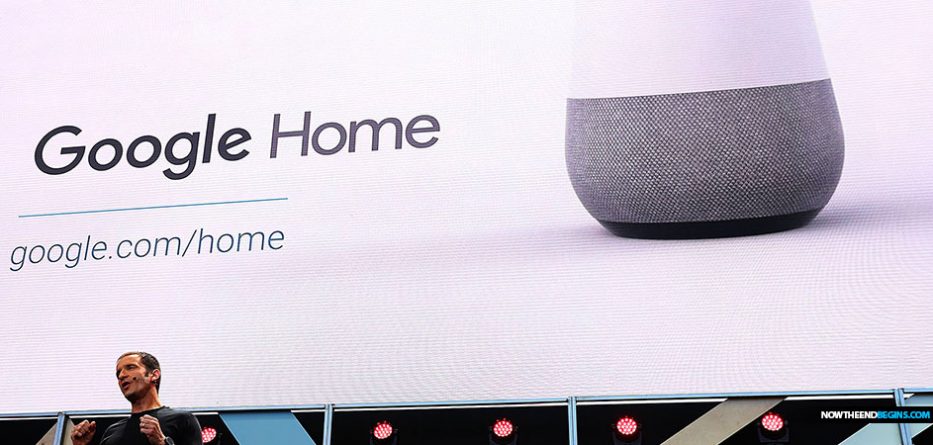What the Google patents describe are sensors and cameras mounted in every room to follow us and analyze what we’re doing throughout our home. They describe how the cameras can even recognize the image of a movie star’s image on a resident’s t-shirt, connect it to the person’s browsing history, and send the person an ad for a new movie the star is in.

Patents recently issued to Google provide a window into their development activities. While it’s no guarantee of a future product, it is a sure indication of what’s of interest to them. What we’ve given up in privacy to Google, Facebook, and others thus far is minuscule compared to what is coming if these companies get their way.
Google is leading the way in the exciting, new ‘smart home’ available to inhabitants of the 21st century. Their to desire is to make your home ‘smart’, as opposed to the dumb homes we have all been living in. Just how ‘smart’ do they plan on going? So smart that only a true idiot would want to live in the type of home their draconian product lineup is offering.
“And he had power to give life unto the image of the beast, that the image of the beast should both speak, and cause that as many as would not worship the image of the beast should be killed.” Revelation 13:15 (KJV)
Google is right now placing products in people’s home to record their voices, record their images, listen to the music you’re listening to, photograph and catalog images on your clothing, even down to recording how many times per day your toilet is being flushed. In short, Google is getting into bed with you, and they have no plans for ever getting out.
People are not stopping to consider that if your heat, lights and air conditioning can be turned on with a voice command over a ‘smart’ device, then anyone able to access the system is able to turn them off. That Mark of the Beast that’s coming in the time of Jacob’s trouble? That mark will be connected to your smart home, your smart car, and your smart bank account. Without the Mark you will have no access to any of it.
Google Reveals Plans to Monitor Our Moods, Our Movements, and Our Children’s Behavior at Home
FROM PJ MEDIA: These patents tell us that Google is developing smart-home products that are capable of eavesdropping on us throughout our home in order to learn more about us and better target us with advertising. It goes much further than the current Google Home speaker that’s promoted to answer our questions and provide useful information, and the Google-owned Nest thermostat that measures environmental conditions in our home. What the patents describe are sensors and cameras mounted in every room to follow us and analyze what we’re doing throughout our home.
They describe how the cameras can even recognize the image of a movie star’s image on a resident’s t-shirt, connect it to the person’s browsing history, and send the person an ad for a new movie the star is in.
PATENT, NO. 10,114,351, READS AS FOLLOWS: “ACCORDING TO EMBODIMENTS OF THIS DISCLOSURE, A SMART-HOME ENVIRONMENT MAY BE PROVIDED WITH SMART-DEVICE ENVIRONMENT POLICIES THAT USE SMART-DEVICES TO MONITOR ACTIVITIES WITHIN A SMART-DEVICE ENVIRONMENT, REPORT ON THESE ACTIVITIES, AND/OR PROVIDE SMART-DEVICE CONTROL BASED UPON THESE ACTIVITIES.”
So clearly they want to monitor us and report back what we are doing. It goes on to describe an example in the usual patent legalese. But it’s worth providing here the exact description for you to see, in particular, the last sentence:
By way of example, the high-power processor 20 and the low-power processor 22 may detect when a location (e.g., a house or room) is occupied (i.e., includes a presence of a human), up to and including whether it is occupied by a specific person or is occupied by a specific number of people (e.g., relative to one or more thresholds). In one embodiment, this detection can occur, e.g., by analyzing microphone signals, detecting user movements (e.g., in front of a device), detecting openings and closings of doors or garage doors, detecting wireless signals, detecting an internet protocol (IP) address of a received signal, detecting operation of one or more devices within a time window, or the like. Moreover, the high-power processor 20 and the low-power processor 22 may include image recognition technology to identify particular occupants or objects.

GOOGLE CREATING MARK OF THE BEAST ‘SMART CITY’ IN CANADA AS PILOT TEST PROJECT FOR GLOBAL APPLICATION
In other words, the goal is to track us throughout the home — observing who is in each room, where we are moving, and what we are doing.
What’s of note is the patent that was awarded to one of Google’s star teams, associated with the development of the Nest thermostat — a breakthrough product with a microphone.
When Amazon first introduced their Alexa speaker, and Google followed with their own speaker, security experts warned that these devices could be turned around to spy on us, and that’s exactly what appears to be happening. While there are many good uses for adding sensors for home automation, the danger comes when they are being monitored and used by outside companies with an insatiable desire to know everything about us. READ MORE